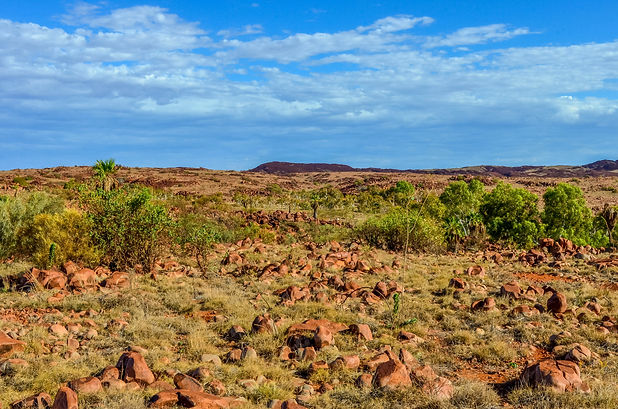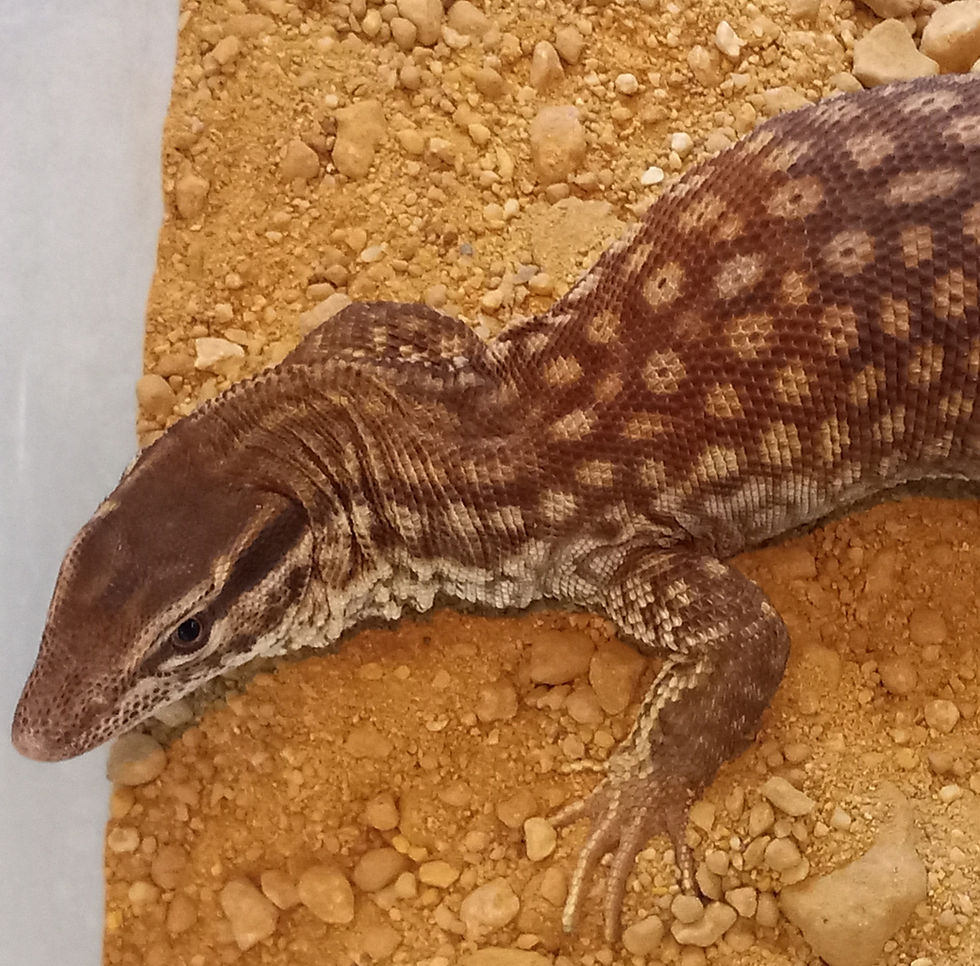Ackie Monitor Lizards
The Varanus Acanthurus, often referred to as the Ackie Monitor or Spiny-tailed Monitor, is a dwarf monitor that appeals to reptile enthusiasts with its intriguing habits and striking beauty. Known for its friendly demeanor, this smaller species is a delight to care for, providing an engaging experience for both seasoned keepers and beginners alike. The Ackie Monitor's vibrant colors and unique personality make it a standout choice in the reptile community. Embrace the charm of this remarkable reptile and enjoy the journey of keeping one as a companion

Description
Ackie monitors, scientifically known as Varanus acanthurus, are fascinating reptiles native to Australia. These terrestrial lizards boast elongated bodies and well-developed claws, making them skilled at burrowing beneath rocks and spinifex grass. Their climbing abilities are equally impressive, often spotted scaling rocky outcroppings and escarpments. With their distinctive tail covered in spiky scales, Ackies can take refuge in crevices, using their tails as anchors to protect against predators. Their striking coloration varies by region, with Red Ackies showcasing vibrant red to orange hues adorned with white or yellow rosettes, while Yellow Ackies, those from brown or tan soil areas exhibit complementary patterns.
Size
Ackies, a notable species within the dwarf monitor category, are smaller than their larger counterparts yet remain prominent in the Odatria subgenus. Adult males typically attain lengths ranging from 18 to 30 inches, while females generally reach between 16 to 24 inches. Their size contributes significantly to their popularity, as they are comfortably manageable for handling without posing a risk to either the animal or the handler. This characteristic makes Ackies an excellent option for both novice and experienced reptile keepers.


Range
Ackies, or Ackie monitors, are fascinating creatures native to the western, northern, and central regions of Australia. These lizards thrive in scrubland environments, often found among rocky outcrops and the distinctive spinifex grass. Their adaptability to such habitats make them unique members of Australia’s diverse wildlife.
Heating
&
Lighting
These diurnal lizards thrive with proper heat and UVB lighting. To keep them energized and aid in digestion, maintain a basking temperature between 110°F and 130°F, while ensuring an ambient temperature of 80°F to prevent thermal burns. UVB is mandatory for keeping your animals healthy and happy. It prevents conditions like metabolic bone disease (MBD) by providing the essential UV light your monitor needs to synthesize calcium. We trust Arcadia Dragon 14% UV High Output T5 lights for our arid monitors. We also provide a balanced light cycle of 12 hours of light and 12 hours without light to simulate their natural cycle.


Nutrition
Feeding your Ackie the right food will help them have a longer and happier life. We provide a diverse diet of insects including crickets, dubia roaches, grasshoppers, and silkworms to ensure optimal nutrition. Occasionally, we offer higher protein prey items like pinky mice and hard-boiled quail eggs, but we advise caution as frequent feeding of these can lead to health issues such as fatty liver disease.
Humidity
Requirements
Hydration and humidity are essential for all animals and Ackies are no exception. Be sure to offer your Ackie fresh clean dechlorinated water daily. Ackie monitors should have varying humidity levels throughout their enclosure. The goal is to replicate the same micro climates that these animals have access to in the wild. A range from 50% - 80% humidity should be available to them throughout their enclosure. This is achievable by providing a humid hide or area within the enclosure where the humidity can be slightly higher to allow the monitor to regulate its hydration as needed. These humidity levels can be maintained by misting the enclosure regularly, using a deep substrate layer, providing a humid hide or lay box, or providing a good sized water bowl.


Habitat
and
Enrichment
To ensure your Ackie thrives, it's essential to provide a suitable enclosure. The ideal enclosure size for a single Ackie measures 4'L x 2'W x 2'H but for a pair or trio, aim for a larger enclosure of around 5'L x 2'W x 3'H or more. Enhance their habitat with a 3D background, multiple climbing shelves, and cork hollows, along with a deep substrate layer for burrowing. Incorporate live plants and leaf litter to encourage foraging behavior, keeping your Ackie's mind stimulated and providing endless enjoyment for you as their keeper.
Life Span
Ackie monitors can thrive for 15-20 years with the right care and husbandry. Providing a suitable habitat and balanced diet are essential for longevity. By maintaining optimal conditions, you can ensure a happy and healthy life for your Ackie.










